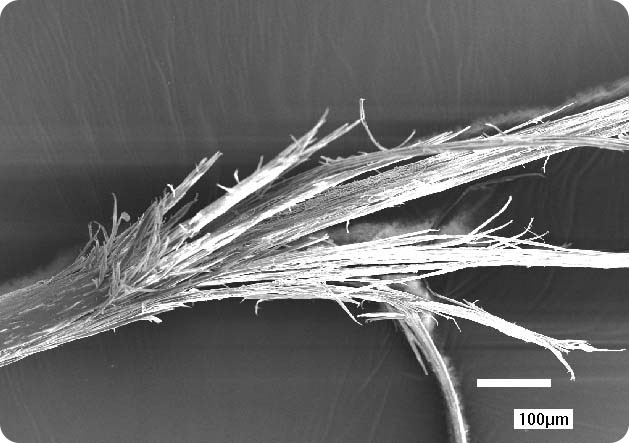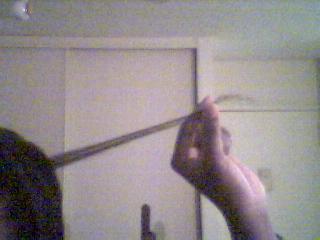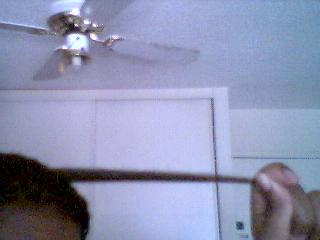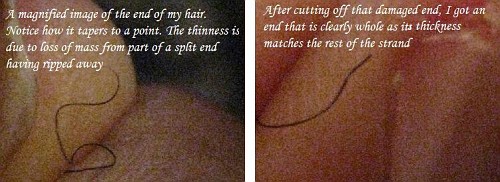Q
Dr. Greene, I read your comments concerning school age children's hair loss. My situation is a little different. I have an 18-month-old girl and she has been losing her hair for about 6 weeks. The dermatologist says she has symptoms of trichorrhexis invaginata and trichorrhexis nodosa. He says her nails and teeth are fine and does not expect anything more than hair loss. This hair disorder has an autosomal-recessive mode of inheritance. My husband and I have checked back at least three generations and no one has ever had anything like this. Please let me know of any information on causes and treatments you may know of. I have checked local libraries and I have to be a medical student to get information from a college library. I bought a computer hoping to find information on the internet, but your article was the closest I came. Please, if you can give me any information I would greatly appreciate it. I am very concerned and would just like to be more educated about this condition and what I can expect in the months to come. Thank you for your time.
Nashville, Tennessee
A:We all know how much we hate to have a bad hair day. Our hair is anTrichorrhexis (pronounced trick-o reck sis) is not a word you are likely to hear tossed around in casual conversation. It comes from two old Greek words: trichos -- meaning hair, and rhexis -- meaning fracture. People with trichorrhexis have hair that breaks easily.
Trichorrhexis nodosa is the most common hair shaft disorder. The hair is especially fragile, owing to the presence of tiny grayish-white nodules along the shaft. People with trichorrhexis nodosa have dry, flat, short hair that breaks easily, leaving short, stubbly broken ends and patches of partial baldness. The trichorrhexis may affect only isolated patches of hair, or may affect the entire scalp. Even gentle bending of an affected hair can break it off.
Some people are born with trichorrhexis nodosa, and others acquire it along the way. The congenital form is sometimes associated with tooth or nail abnormalities, which thankfully your daughter does not have. Congenital trichorrhexis nodosa may run in families, or may occur spontaneously. When it does run in families, it is occasionally associated with mental retardation from an underlying metabolic problem (argininosuccinic aciduria -- don't worry about the name). This can be diagnosed with a urine test, but would already be evident from your daughter's development. The great majority of people with trichorrhexis nodosa have no underlying disease, and no problem other than fragile scalp hair.
The acquired form of trichorrhexis nodosa comes in two types: proximal (where the hair breaks close to the scalp) and distal (where the hair breaks farther out). Proximal trichorrhexis nodosa is common in people of African descent. Those with a genetic predisposition to this have hair that becomes more fragile in response to hair straightening, braiding, tight headwear, or harsh brushing. Distal trichorrhexis nodosa is seen mostly in people of European and Asian descent. The hair becomes more fragile with prolonged sun exposure, immersion in saltwater, or mechanical trauma. Both acquired forms of trichorrhexis nodosa will disappear within about 4 years, if the trauma to the hair shafts is stopped. In the meantime, cream rinses and protein conditioners are helpful.
Trichorrhexis invaginata, also called bamboo hair, is a rare abnormality of the hair in which the hair shaft telescopes in on itself (invaginates) at several points along the shaft. Under a microscope, the hair shaft looks like a stalk of bamboo, or a partially-lowered car antenna. The problem with the hair is that the outer wall of the shaft is too soft, allowing the distal part to slip back into the proximal part of the shaft. This rare disorder is more common in girls than in boys. It appears in infancy, and affects all the hairs of the body -- not just those of the scalp. The hair is usually dry, flat, short, sparse, and easily breakable. As yet, there is no specific treatment for trichorrhexis invaginata, but in many children it disappears by itself, beginning at about age 6. If it is still present when puberty is complete, it will likely be a lifelong problem.
Trichorrhexis invaginata sometimes occurs with other hair and skin abnormalities (including trichorrhexis nodosa) in a rare autosomal recessive inherited condition called Netherton's syndrome. Affected children have the hair problem along with allergies and a rash that looks like eczema -- but that doesn't respond well to cortisone creams. These rashes respond very well to the use of ammonium lactate lotion accompanied by treatment of the allergies (Journal of Allergy and Clinical Immunology, January 1995).
Whatever combination of trichorrhexis nodosa and invaginata your daughter has, aim at reducing trauma to her hair. Avoid prolonged or intense sun exposure -- especially between 10 a.m. and 4 p.m. (even on overcast days), since the sun's rays are strongest during these hours. If she is outside, consider a loose-fitting hat (if she's an 18 month old who will keep one on!); a tight hat can mechanically damage the hair. Minimize swimming in salt water (not a major problem in Tennessee, I know). Only shampoo her hair when necessary. When you do, use a cream rinse and protein conditioner. If it contains a sunscreen, that would be a nice bonus. Use the minimal amount of combing and brushing necessary for her to look her best, and be as gentle as you can. Consider using a satin pillowcase, so that when she sleeps her hair will be less likely to bend.
A recent study out of Japan (Journal of Dermatology, February 1995) has shown that out of the many factors that can injure the hair of someone with trichorrhexis, mechanical bending is the most damaging. In this study, even very gentle bending of the hair, using a pair of tweezers, resulted in multiple fractures of the hair shafts. Keeping this information in mind during everything that you do with your daughter's hair (washing, rinsing, combing, etc.) will help you to minimize the damage. Begin now teaching her about her hair. She won't understand yet, but as you lovingly explain why you do the things you do, she will gradually come to understand and care for her own hair.
Remember that the most important part of all this is how your daughter feels about herself. Help her to feel beautiful. She may need extra effort put in to find her adorable clothes, for instance. Cute shoes may make her hair feel like less of a problem.
Find someone great to consult with about hairstyle. For some children, keeping longish hair can help cover bald patches. For others, short hair (which is less likely to break) looks more stylish. Consider having her ears pierced, and giving her some fun earrings. Adorable, loose-fitting hats may work well for some kids. No matter what you do, as she gets older other children may make hurtful comments about your daughter's hair.
No matter what, your daughter’s most important mirror is your eyes.











 I've never been to your split in conference (have I?
I've never been to your split in conference (have I? more power to you! I'm just looking for ways to prolong the cutting process for as long as possible. I wanted to know the absolute longest I could go without cutting, which I cannot do if I can't tell if bushy ends= split ends. Im about 12 weeks post relaxer, so its not exactly pin straight anymore.
more power to you! I'm just looking for ways to prolong the cutting process for as long as possible. I wanted to know the absolute longest I could go without cutting, which I cannot do if I can't tell if bushy ends= split ends. Im about 12 weeks post relaxer, so its not exactly pin straight anymore.